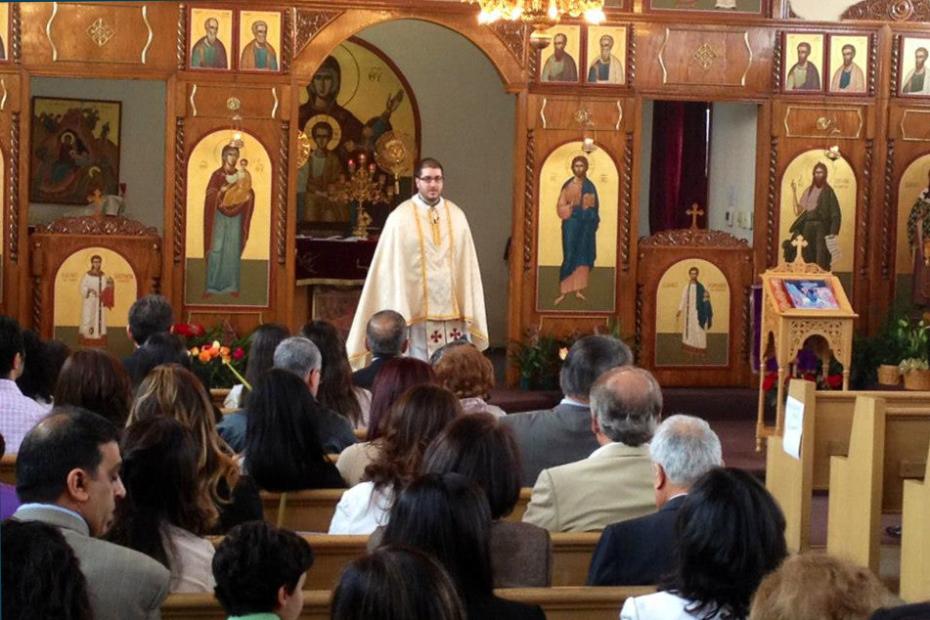There are now more Melkite Catholics living outside the Middle East than inside. The Holy See counts 433,000 live in Brazil, 302,800 in Argentina, 25,400 in Venezuela, and 4,700 in Mexico. Another 24,000 Greek Melkite Catholics live in the United States, 35,000 in Canada, and 52,000 in Australia.1
For social, cultural and canonical reasons, these Catholics face particular challenges. Any process of assimilation, especially across generations, poses especially interesting challenges for a church that has been tied to particular local histories and experiences in the Middle East that are not necessarily as relevant to believers in the new context. In new countries, immigrant churches generally face challenges to preserve both ethnic identity and religious identity. Both responsibilities certainly fall on the church in the originating countries, but not the same way. Young people have other opportunities to learn their language, culture and expected values.
The task is canonically complicated because, outside of the original patriarchal territories, Melkite churches are organized under the authority of Rome, not the Patriarch. Until 2014, Rome also required that Melkite clergy in the non-patriarchal territories be celibate, whereas in the patriarchal territories most are married. This means that the Melkite church has not been able to bring in many Arab-speaking clergy to strengthen ties to home or to be able to minister to new immigrants with native Arabic fluency2 . At the time, the vast majority of Melkite parishes have remained overwhelmingly Arab in their composition, though some were more ethnically diverse.
Beth Macke’s study of lay leaders in Greek Melkite parishes in the United States, published in 19933 , is no longer quite contemporary, but points to some enduring dilemmas that Melkite Catholics face in the U.S. Her survey revealed concern about Melkite parishes’ ability to minister to more educated and Americanized young people, to meet the needs of immigrants, and to welcome in non-Arabs who might be attracted for liturgical and spiritual reasons, but find the ethnic community’s ties difficult to penetrate. For a small church with a limited number of parishes, geographic mobility poses a real dilemma. Even where there is a parish, believers may have to travel a distance to it, or may find themselves relocated for work reasons to areas where there is no Melkite parish.
Ecumenical mixing of Christians is relatively common in the patriarchal lands, but the diaspora provides a newer, more challenging social context wherein many Melkites assimilate to Latin-rite, Protestant, and perhaps no formal affiliation. Whereas the cultural and social context of the Middle East makes it difficult to belong to no church at all, American, Latin American and European contexts make that more readily possible. There seems to be a very large discrepancy between the number of canonical Melkites in the U.S. and the number members of parishes that serve them, suggesting, among other things, that many canonical Melkites may be assimilated in Latin or other Catholic parishes.
Read More:
Fred J. Saato, American Eastern Catholics (Mahwah, NJ: Paulist Press, 2006).
- 1The Annuario Pontificio’s statistics on the dioceses of the Eastern Churches have been compiled by Ronald G. Roberson, CSP for various years from 1990-2013 and are available at http://www.cnewa.org/source-images/Roberson-eastcath-statistics/eastcatholic-stat13.pdf. The numbers do not include Greek Melkite Catholics who live outside of the established dioceses listed above.
- 2Beth A. Macke, “Melkite Catholics in the United States,” Sociology of Religion 54, no. 4 (1993): 418.
- 3Macke, “Melkite Catholics,” 413-420. The survey that underlies this article was conducted in 1991.
